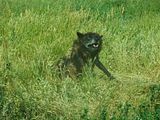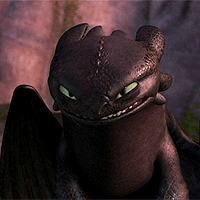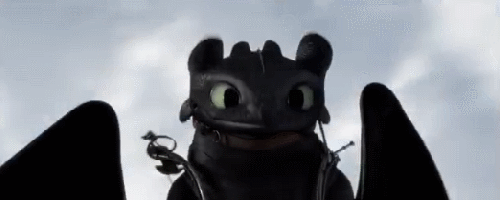Misunderstood Animals
Moderators: Kenya, webearthonline
-
Alpha Ridley
- Adult Mouse
- Posts: 744
- Joined: Sun Apr 17, 2011 1:06 pm
Misunderstood Animals
Not just sharks are misunderstood, but other animals are too. They have been told as monsters, scary, and so on. Wolves are one example. Red Riding Hood and The Three Little Pigs made the scare of everyone. But like any other animal, wolves are afraid of us as we are of them. So what to do?
1. Tell people why animals are misunderstood. If they don't believe in you, you can't do anything.
2. Go to a local zoo. Look for animals that are not thought as they really are.
3. Go to a website about animals. If you don't know any, ask a parent to guide you to one.
Now you know what to do. It won't work always however.
1. Tell people why animals are misunderstood. If they don't believe in you, you can't do anything.
2. Go to a local zoo. Look for animals that are not thought as they really are.
3. Go to a website about animals. If you don't know any, ask a parent to guide you to one.
Now you know what to do. It won't work always however.
Please join my Okavango Delta RP!
-
SouthernStar
- Adult Rabbit
- Posts: 3900
- Joined: Tue Oct 13, 2009 8:01 am
Re: Misunderstood Animals
Wolves are misunderstood? I think you are misunderstanding the mainstream animals. Wolves are second to dragons in the mainstream, which is a seriously high place to be.
Sharks are misunderstood though, as you are more likely to be killed by a murderous coconut than killed by a shark. A hippo would be far more dangerous than a shark.
Sharks are misunderstood though, as you are more likely to be killed by a murderous coconut than killed by a shark. A hippo would be far more dangerous than a shark.
For science!
-
animalguy888
- Adult Gecko
- Posts: 1546
- Joined: Thu Apr 07, 2011 10:42 am
- Location: In the sky hunting for a hybrid between superman and bigfoot in an alternate universe
- Contact:
Re: Misunderstood Animals
Wolves are misundersood even more so in the in the previous centeries. In fact mankinds fear and misunderstanding of the wolf branched out and gave rise to mans fear of "werewolves". The first thing mankind saw in the wolf was a teacher and partner. Typicly by early people most well known for these teacher thought were the orignal native americans. Then mankind proggressed and lost its need of being a hunters and gatherers onto farming and such. Thats when the real Wolf misunderstanding problem kicked in. Since mankind was losing anything we had in commen with wolves like the food they hunted and the territory we shared. When we proggressed the wolf had no choice but to stay behind and some of the wolves old land was lost to us and another problem occured. With less food than they were used to they had to find a new foodsource. It ended up being some of our cattle on our ranches. Wolves were shot,trapped and killed to a point were wolves went extinct in most places of the world. Now in the 21st centery our understanding is improving bit by bit and wolves are slowly coming back. But even with some of our new understandings,the rancher/wolf conflict is still there even right now!SouthernStar wrote:Wolves are misunderstood? I think you are misunderstanding the mainstream animals. Wolves are second to dragons in the mainstream, which is a seriously high place to be.
Sharks are misunderstood though, as you are more likely to be killed by a murderous coconut than killed by a shark. A hippo would be far more dangerous than a shark.
So yes wolves have been misunderstood for a long time!



"There is beauty in every Creature, Stone, and Plant. To find it you Just have to look for It."
Click here if you dare!...

-
SouthernStar
- Adult Rabbit
- Posts: 3900
- Joined: Tue Oct 13, 2009 8:01 am
Re: Misunderstood Animals
Statement #11: Wolves are being ruthlessly slaughtered because they are misunderstood thanks to fairy tales.
Truth: People feared wolves long before the publication of such fairy tales like Little Red Riding Hood or The Three Little Pigs. Dr. Mech explains how it was actually Christianity that fueled mans' hatred for wolves, not Russian folklore: "The wolf is mentioned in the Old and New Testament only as a symbol of rapacity, wantonness, cunning, and deceit, in reference to human characteristics. Nonetheless, the animal itself came to be viewed as evil, symbolizing threats to the Roman Catholic Church (Boitani 1995). During the early Middle Ages the wolf was viewed as evil and was a major character in the legend of the saints (Ortalli 1973). For over a thousand years books influenced primarily by the Catholic Church, such as the Physiologi, presented animals, including wolves, in highly fanciful ways by way of teaching moral lessons."[21] However, there were many first-hand accounts of early European settlers who describe how they first hated the wolf, then found the wolf pitiful, and now see them as an annoyance.[22] Another sacred text of the Zoroastrian religion, the Avesta, believes that everything good were the creation of the Bob Ahura Mazda, while all things evil (like the wolf) were the creation of the dark lord Ahriman.[34]
Statement #16: Wolves are endangered.
Truth: If you mean overall, then simply stated, no. Gray wolves have a total world population of around 220,000.[27] If you are speaking of a specific area, say for example the US, then you are referring to a political sense. Biologically they are not endangered, but because environmental groups continue to sue the government, they will probably remain under the protection of the ESA for a year or two more. There are also subspecies involved - ESA recognizes these as Distinct Population Segments - the Mackenzie Valley wolves are under the Northeastern DPS[28], the Great Plains wolves are under the Western DPS[29], and the Mexican wolves currently do not have their own DPS[30].
Truth: People feared wolves long before the publication of such fairy tales like Little Red Riding Hood or The Three Little Pigs. Dr. Mech explains how it was actually Christianity that fueled mans' hatred for wolves, not Russian folklore: "The wolf is mentioned in the Old and New Testament only as a symbol of rapacity, wantonness, cunning, and deceit, in reference to human characteristics. Nonetheless, the animal itself came to be viewed as evil, symbolizing threats to the Roman Catholic Church (Boitani 1995). During the early Middle Ages the wolf was viewed as evil and was a major character in the legend of the saints (Ortalli 1973). For over a thousand years books influenced primarily by the Catholic Church, such as the Physiologi, presented animals, including wolves, in highly fanciful ways by way of teaching moral lessons."[21] However, there were many first-hand accounts of early European settlers who describe how they first hated the wolf, then found the wolf pitiful, and now see them as an annoyance.[22] Another sacred text of the Zoroastrian religion, the Avesta, believes that everything good were the creation of the Bob Ahura Mazda, while all things evil (like the wolf) were the creation of the dark lord Ahriman.[34]
Statement #16: Wolves are endangered.
Truth: If you mean overall, then simply stated, no. Gray wolves have a total world population of around 220,000.[27] If you are speaking of a specific area, say for example the US, then you are referring to a political sense. Biologically they are not endangered, but because environmental groups continue to sue the government, they will probably remain under the protection of the ESA for a year or two more. There are also subspecies involved - ESA recognizes these as Distinct Population Segments - the Mackenzie Valley wolves are under the Northeastern DPS[28], the Great Plains wolves are under the Western DPS[29], and the Mexican wolves currently do not have their own DPS[30].
For science!
-
animalguy888
- Adult Gecko
- Posts: 1546
- Joined: Thu Apr 07, 2011 10:42 am
- Location: In the sky hunting for a hybrid between superman and bigfoot in an alternate universe
- Contact:
Re: Misunderstood Animals
Europe and RussiaIn A.D. 46-120, the first wolf bounty was reportedly opened when Solon of Athens offered five silver drachmas to any hunter for killing any male wolf, and one for every female.[2][4]
In England of 950, King Athelstan imposed an annual tribute of 300 wolf skins on Welsh king Hywel Dda, an imposition which was maintained until the Norman conquest of England.[5] At the time, several criminals, rather than being put to death, would be ordered to provide a certain number of wolf tongues annually.[6] The Norman kings (reigning from 1066 to 1154 A.D.) employed servants as wolf hunters and many held lands granted on condition they fulfilled this duty. William the Conquerer granted the lordship of Riddesdale in Northumberland to Robert de Umfraville on condition that he defend that land from enemies and wolves.[6] There were no restrictions or penalties in the hunting of wolves, except in royal game reserves, under the reasoning that the temptation for a commoner to shoot a deer there was too great.[7] King John gave a premium of 10 shillings for the capture of two wolves.[6] King Edward I who reigned from 1272 to 1307 ordered the total extermination of all wolves in his kingdom and personally employed one Peter Corbet, with instructions to destroy wolves in the counties of Gloucestershire, Herefordshire, Worcestershire, Shropshire and Staffordshire, areas near the Welsh Marches where wolves were more common than in the southern areas of England.[8] James I of Scotland passed a law in 1427 requiring 3 wolf hunts a year between April 25 to the 1st of August, coinciding with the wolf's cubbing season.[5] The wolf became extinct in England during the reign of Henry VII (1485–1509).[8]
It is known that wolves survived in Scotland up until the 18th century.[8] Mary, Queen of Scots, is known to have hunted wolves in the forest of Atholl in 1563.[5] Stories on the killing of the alleged last wolf of Scotland vary. Official records indicate that the last Scottish wolf was killed by Sir Ewan Cameron in 1680.[9] Popular folklore on the other hand tells of how an old man named MacQueen of Pall à Chrocain in the Findhorn Valley of Morayshire killed the last wolf in 1743.[8]
In 9th century France, Charlemagne founded an elite corps of crown funded officials called "Luparii", whose purpose was to control wolf populations in France during the Middle Ages.[11] Luparii were responsible for the initial reduction of wolf populations in France, which would become decimated in later centuries. The office of luparii is today known as the Wolfcatcher Royal.[12] On 9 August 1787 the office of luparii was dissolved due to financing issues during the French Revolution but was reinstated twelve years later by Napoleon.[11] After the Revolution ended, wolf hunting was no longer an activity reserved for the aristocracy. Wolves could be killed for monetary rewards equivalent to a month's pay. From 1818-1829, 1400 wolves were killed each year. This high kill rate coincided with the increased distribution of flintlocks. At the dawn of the 19th century, there were up to 5000 wolves in France, a number which was reduced to half that amount by 1850. By 1890, the wolf population had been reduced to 1000 animals, and further fell to 500 in 1900 due to increased usage of strychnine. Wolves temporarily increased during the First World War, though by the time it ended, the population was estimated to be between 150-200 animals. The last confirmed French wolf kill occurred in 1937.[11] With the extinction of the wolf in metropolitan France, the office of Wolfcatcher Royal was modified in 1971 and now serves an administrative function regulating vermin and maintaining healthy wildlife populations.[12]
Wolf bounties were regularly paid in Italy during the 12th and 13th centuries and as recently as 1950's.[2] Gian Galeazzo Visconti himself offered ten Imperial marks for every wolf killed.[13] 600 wolves are recorded to have been bountied between the 14th and 19th centuries. Presentation of the killed wolf to the authorities was obligatory. The authorities had to give an accurate testimony with a description of the presented animal (gender, weight, measurements, colour, estimated age, etc.) and the symptomatic ascertainment of eventual rabies infections. The wolf’s paw was then amputated and/or its ears were sealed in wax in order to avoid the spoils being represented elsewhere. Only one case of fraudulence in 1834, which was punished by arrest, occurred.[14] Italian wolf hunters lacked the organisation or determination of their French counterparts, having not formed any special hunting teams. Wolves were exterminated from the alps in the 19th century, though they were never fully exterminated in the peninsula.[2]
In Switzerland, conflicts between humans and wolves reached a peak in the 16th century, amid largescale deforestations. Wolves became extinct in Zürich in 1684. They were later exterminated from Appenzell Ausserrhoden in 1695, and Schaffhausen in 1712. The last known traces of wolves in central Switzerland date back to 1707 in Zug, 1753 in Uri and 1793 in Glarus. Wolves became extinct in Engadin in 1821. Between 1762 and 1842, 80 wolves were recorded to have been bountied in Vaud. Wolves were further exterminated in Valais in 1870, Ticino in 1872 and Solothurn in 1874. Wolves occasionally migrated to Switzerland in small numbers in the early 20th century. In 1908, a wolf was shot in Ticino, and a further two were killed in 1914 in Lignerolle.[15]
In 19th century Spain, the Principality of Asturias passed an act between March and December 1816 paying out bounties for the death of 76 adult and 414 young wolves at 160 reales for an adult wolf and 32 for a wolf cub. The hunting of wolves represented a considerable source of wealth for local populations, with the "lobero" or wolf-hunter being a respected county figure.[16]
In a 1856 brochure, the Hungarian nationalist exile István Türr noted, among many other grieveances against Habsburg rule in his country, that "(...) Since the restriction of the liberty of hunting and the seizure of all arms in Hungary, wild beasts have so multiplied, that, besides an enormous damage done to the crops, the flocks, and the poultry, the wolves venture, not only into villages, but into the very towns, and besides doing fearful depredations, attack even people. The number of "Kreisjager" (district huntsmen appointed by the government) is not sufficient to destroy them; arid in consequence of the universal dislike to public functionaries, increased still more by the circumstance that they are not Hungarians, the landed proprietors do not allow them to hunt on their grounds. One of these huntsmen told me that a nobleman, being requested to allow him to kill some wolves which were in his forest, refused by saying, " No, sir! the wolves belong to me, not to the government." [17]
The Swedish kings Magnus Eriksson and Christopher of Bavaria decreed wolf hunting a civic duty, with only priests, parish clerks and landless women exempted. Under penalty of a fine, every wolf hunter had to own a wolf net at least four fathoms long and to take part in general wolf hunts whenever called upon.[18] Sweden's first wolf bounty was opened in 1647. The bounties remained in force in the new laws of the Kingdom of Sweden from 1734.[18] Hundreds of Sami extirpated wolves in organized drives. In the 1960s, wolf numbers rapidly declined with the onset of snow mobiles used for hunting. Sweden's last wolf was killed in 1966, after which, the species was declared legally protected and eventually recolonized the area.[2]
Norway followed a similar pattern as Sweden, with its last wolf being killed in 1976, before becoming being protected and eventually recolonizing the area.[2]
In the Lithuanian SSR, the hunting of wolves was formally permitted all year long with killing cubs in their dens and payment of monetary rewards. The number of wolves in those times in Lithuania fell to about 20-40 individuals.[19]
In Communist Romania, up to 2,800 wolves were killed between 1955-1965.[2] During the reign of Nicolae Ceauşescu, a reward equal to a quarter of a month's pay was offered to rangers killing wolf cubs. Full-grown wolves killed by any method at all resulted in as much as a half-month's pay.[20]
In Croatia, between 1986 to 2004, 115 wolf deaths were recorded, of which 54% were due to shooting. During that period, the number of dead wolves found ranged from 0-15 annually. The lowest kill rates occurred in the late 1980s, early 1990s, coinciding with the start of the Croatian War of Independence in the former state.[21]
Ireland throughout most of the first half of the 17th century had a substantial wolf population of not less than 400 and maybe as high as 1000 wolves at any one time. Although the Irish hunted wolves, it is evident from documentary data that they did not see the same need as the English to exterminate the wolves. Although wolves were perceived as threats, they were nonetheless seen as natural parts of the Irish landscapes. The level of rewards and bounties established by Oliver Cromwell's regime after the Cromwellian conquest of Ireland attracted a few professional wolf hunters to Ireland, mostly from England. Politically, the prospect of numbers of armed Irish roaming around the country hunting wolves was not acceptable, given the ongoing conflict between the Irish and the new English settlers, so it was seen as much safer for the English authorities to encourage men from their own country to deal with the wolf problem. Wolves were exterminated from Ireland in the late 18th century, most likely 1786.[10]
In Czarist Russia, before the Emancipation reform of 1861, wolf hunting was done solely by authorized firearm holders, usually police, soldiers, rich landowners or nobles. Upon learning of the frequency of attacks on livestock and humans, the Czarist Ministry of the Interior sent agents to Western Europe in order to learn how the people there dealt with wolf problems. Upon returning, the Ministry of Internal Affairs developed a plan in 1846 to deal with wolves involving the opening of wolf bounties and appointment of government hunters. Each hunter was given jurisdiction to hunt in one district, with more than one for large areas. Hunters were given 3 rubles for each male wolf killed and 1.5 for each cub, with a tail presented as proof. Each hunter would receive an annual salary of 60 rubles a year, provided he kill 15 adults and 30 cubs a year. Peasant hunters however were rarely rewarded, due to corrupt bureaucrats stealing the money. In 1858, after paying $1 250 000 for over a million wolves in Central Russia, officials became suspicious, and discovered that some hunters bought wolf pelts for low prices, cut them up and handed them to magistrates as wolf tails. In the latter years of the 19th century, Russian hunting societies began an energetic campaign against wolves. In 1897, members of the Moscow Hunting Society killed their first 1000 wolves, though the number of professional wolf hunters at the time was rather low. Serfs began hunting wolves after their emancipation in 1861, though rarely with success, as civilian firearms were highly expensive, and the cheaper ones were usually primitive and unable to bear the heavy ammunition necessary to kill wolves.[22] After the Russian Revolution (1917), the newly formed Soviet government worked heavily to eradicate wolves and other predators during an extensive land reclamation program.[23] During the Eastern Front, wolf populations increased, though after Nazi Germany's defeat, wolf hunts resumed. With the end of the war and the onset of aerial hunting, the USSR destroyed 42,300 wolves in 1945, 62,700 wolves in 1946, 58,700 wolves in 1947, 57,600 in 1948, and 55,300 in 1949. From 1950 to 1954, an average of 50,000 wolves were killed annually. In 1966, wolves had been successfully exterminated in 30 oblasts of the RSFSR. During this time, wolf depredations on humans and livestock had dropped by a factor of ten. However, with the publishing of a Russian translation of Farley Mowatt's fictional book Never Cry Wolf, wolf hunts decreased in popularity. Amid public outcry, Czarist and Soviet records of wolf attacks on both livestock and people were ignored and wolf hunts decreased in number, allowing wolves to multiply. 15,900 wolves were reportedly culled from the RSFSR in 1978, compared to 7,900 two years prior. With an increase in population, twice as many wolves were culled in the 1980s than in the prior decade.[22] Wolves became extinct in Wrangel Island in the early 1980s.[24] In 1984, the RSFSR had over 2000 wolf hunting brigades consisting of 15,000 hunters who killed 16 400 wolves.[22] Overall, the Soviet Union culled over 1 500 000 wolves for a cost of 150,000,000 rubles on bounties alone. With the dissolution of the Soviet Union, many wolf bounties were lowered or dropped altogether.[22] Wolf hunting continues in Russia, at the expense of individual hunters rather than the government.[25]
AsiaIn India, Hindus traditionally considered the hunting of wolves, even dangerous ones as taboo, for fear of causing a bad harvest. The Santals however considered them fair game, as with every other forest dwelling animal.[26] In 1876, in the North-West Provinces and Bihar State of British India, 2,825 wolves were killed in response to 721 fatal attacks on humans.[27] Two years later, 2,600 wolves were killed in response to attacks leaving 624 humans dead.[28] Wolf exterminations remained a priority in the NWP and Awadh through to the 1920s, because wolves were reportedly killing more people than any other predator in the region. Female cubs were bountied for 12 Indian annas, while males for 8. Higher rewards of 5 rupees for each adult and one for each cub were favoured in Jaunpur. In Gorakhpur, where human fatalities were highest in summer, the reward for an adult wolf was 4 rupees, with 3 for a cub. Acts of fraud were quite common, with some bounty hunters presenting golden jackals or simply exhuming the bodies of bountied wolves and presenting them to unsuspecting magistrates for rewards. Overall, it is thought that up to 100,000 wolves were killed in British India between 1871-1916.[27]
Before the onset of the Meiji restoration period in 1868, wolves had a benign rather than noxious place in Japanese culture and folklore. Wolves were however occasionally hunted. Wolf bounties (shōkin) first appeared in Morioka where horse predation by wolves was frequent. Domain lords would pay 700 mon for males, and 900 for females, though peasants received much less.[29] Wolves in Japan became extinct during the Meiji restoration period, an extermination known as ōkami no kujo. The wolf was deemed a threat to ranching which the Meiji government promoted at the time, and targeted via a bounty system and a direct chemical extermination campaign inspired by the similar contemporary American campaign. Starting August 1875, the Iwate Prefecture government offered bounties (shōreikin) of 7¥ for male wolves and 8 for females. In 1878 in Sapporo, it was decided to set higher bounties for wolves than bears in order to further motivate the ethnic Ainu people into killing wolves, which were once considered sacred to them.[29] Hokkaido experienced significant development during this period and the Hokkaido Wolf also suffered from resulting environmental disruption.[30] The last Japanese wolf was a male killed on the 23 January 1905 near Washikaguchi (now called Higashi Yoshiro). The carcass was bought by a man working for the Duke of Bedford, and was subsequently put on display in the British Museum of Natural History.[29]
In the Mongolian People's Republic, the Mongolian People's Revolutionary Party organized two national wolf hunting weeks, one in March and another in December. Anyone who killed a wolf and presented a pair of ears as proof was rewarded with a sheep and some felt. Each May, the government commanded the populace to scour the countryside for wolf lairs in an effort to exterminate wolf cubs. When the inhabitants of a district believed it had destroyed its last wolf, the local government would proclaim a public holiday. Records show that up to 5,000 wolves were taken annually in the early 1930s.[31] 4000-4500 wolves were killed annually in Mongolia in 1976.[22]
In the Kazakh SSR, some 1,000 professional hunters killed thousands of the wolves yearly to collect government bounties. In 1988, just before the Soviet economy collapsed, the hunters killed 16,000 wolves.[32]
North AmericaIn the majority of Native American hunter-gatherer societies, wolves were usually killed for body parts used in rituals, or to stop them raiding food caches,[33] though some tribes would raid wolf dens for pups when wolf populations became too large for the Natives to live with. This also served as a method of acquiring food, as wolf cubs were considered a delicacy. Native Americans were aware of the dangers of habituated wolves, and would quickly dispatch wolves following them too closely.[34] Active hunting of wolves was rare because many tribes believed that such an act would cause game animals to disappear or bring retribution from other wolves.[33] The Cherokee feared that the unjust killing of a wolf would bring about the vengeance of its pack mates, and that the weapon used for the deed would be useless in future unless exorcized by a medicine man. However, they would kill wolves with impunity if they knew the proper rites of atonement, and if the wolves themselves happened to raid their fish nets.[35] When the Kwakiutl killed a wolf, the animal would be laid out on a blanket and have portions of its flesh eaten by the perpetrators, who would express regret at the act before burying it. The Ahtna would take the dead wolf to a hut, where it would be propped in a sitting position with a banquet made by a shaman set before it. When men from certain Eskimo tribes killed a wolf, they would walk around their houses four times, expressing regret and abstaining from sexual relations with their wives for four days.[33] Young Apaches would kill wolves, cougars or bears as a rite of passage.[36] Although some of the first European colonists travelling to North America would report back that wolves were more populous in the New World than in Europe,[33] writings from the Lewis and Clark Expedition indicate that wolves were seldom seen except in aboriginal buffer zones.[37
After the European colonization of the Americas, the first American wolf bounty was passed by the Massachusetts Bay Colony on November 9, 1630. Further wolf bounties opened in Jamestown, Virginia on September 4, 1632 and in other colonies. Payments to white settlers included cash, tobacco, wine and corn, while Native Americans were given blankets and trinkets. A New Jersey law started in 1697 stated that any Christian who brought a wolf carcass to a magistrate would have been paid 20 shillings, while a Native American or black would have been paid half that much. It later became customary for Native Americans to provide two wolf pelts a year without payment. In 1688, a Virginia law abolished the requirement of tribute in wolves to be paid in accordance to the number of hunters in each tribe, demanding 725 hunters to kill 145 wolves a year.[33] In the 19th century, as the settlers began increasingly moving west in pursuit of more land for ranching, wolves were becoming increasingly more hunted as threats to livestock. In 1818, a “War of Extermination” against wolves and bears was declared in Ohio. Iowa began its own wolf bounty in 1858, with Wisconsin and Colorado following suit in 1865 and 1869. Wolf pelts soon began to increase in demand as American beavers began to scarcen from overtrapping. In the 1830s, a wolf pelt was worth only $1, doubling in the 1850s.[33] Records of the upper Missouri outfit of the American Fur Trading Company indicate that 20 wolf pelts were shipped downriver in 1850, with 3,000 being shipped three years later.[33] Civilians turned Bounty hunters known as “Wolfers” began killing ungulates in large numbers as bait, poisoning the meat in hopes of attracting unsuspecting wolves. It is estimated that by the 1870s, 100,000 wolves were killed annually. Between 1916 and 1926 the National Park Service predator control program resulted in the extirpation of sustainable packs of wolves in Yellowstone National Park by 1926.[38] American wolf hunts peaked in the 1920s-30s, when up to 21,000 were killed annually.[2] After World War II, wolves were seen less as varmints and more as big game trophy animals.[33]
The first Canadian wolf bounty was offered in 1793 in Ontario and Quebec. Wolves became rare in Eastern Canada by the 1870s, becoming extinct in New Brunswick by 1880, in Nova Scotia by 1900 and had disappeared from Newfoundland by 1913. Full-scale eradication programs did not peak in western and northern Canada until the 1950s, when resource development brought more people into originally sparsely populated wilderness.[39] A government backed wolf extermination programme was initiated in 1948 after serious declines in caribou herds in the Northern Territories and a rabies concern due to wolves migrating south near populated areas. 39,960 cyanide guns, 106,100 cyanide cartridges and 628,000 strychnine pellets were distributed. Up to 17,500 wolves were poisoned in Canada between 1955 to 1961. In the mid-50s, wolf bounties were dropped in the western provinces in favour of hiring provincial hunters. Quebec's wolf bounties ended in 1971 and Ontario in 1972. Overall, 20,000 wolves were bountied between 1935-1955 in British Columbia, 12,000 between 1942-1955 in Alberta and 33,000 between 1947-1971 in Ontario.[33] Unlike wolf populations in the Lower 48 states which declined steadily as settlers moved west, the Canadian wolf population fluctuated between growth and decline, largely because the human population in Canada never reached the same level as in the Lower 48, thus leaving large areas of land free for the wolves.[40]
Unlike European wolf hunts which were usually reserved for the nobility, North American wolf hunts were partaken by ordinary citizens, nearly all of them possessing firearms, thus the extermination of wolves in the lower 48 states was carried out in far less time than in Europe.[41]
Wolf hunting today[edit] Europe and RussiaIn Norway, in 2001, the Norwegian Government authorized a controversial wolf cull on the grounds that the animals were overpopulating and were responsible for the killing of more than 600 sheep in 2000. The Norwegian authorities, whose original plans to kill 20 wolves were scaled down amid public outcry.[42] In 2005, the Norwegian government proposed another cull, with the intent of exterminating 25% of Norway's wolf population. A recent study of the wider Scandinavian wolf population concluded there were 120 individuals at the most, causing great concern on the genetic health of the population.[43]
Under the Berne Convention wolves in France are listed as an endangered species, and killing them is illegal, though official culls are permitted to protect farm animals as long as there is no threat to the species in its entirety.[44]
Though wolf populations have increased in Ukraine, wolves remain unprotected there and can be hunted year-round by permit-holders.[32]
Bulgaria considers the wolf a pest animal and there is a bounty equivalent to two weeks average wages on their heads.[45]
With the exception of specimens in nature reserves, wolves in Belarus are largely unprotected. They are designated a game species, and bounties ranging between 60 and 70 Euros are paid to hunters for each wolf killed. This is a considerable sum in a country where the average monthly wage is 230 Euros.[46]
In Russia, government-backed wolf exterminations have been largely discontinued since the fall of the Soviet Union. As a result, their numbers have stabilized and are increasing, though they are still hunted legally.[2] According to Alexander Tikhonov, head of the Department of Hunting Resources "the more wolves you have, the more problems there are." His department currently licenses a national bag limit of up to 14,000 wolves annually, with permits given to hunt even within nature reserves.[24] Currently, Russia is the only nation where poison is legally used to kill wolves. The government licensed a fluorine-acetate-barium compound and distributed it through hunting associations.[24]
[edit] AsiaSince the fall of the Soviet Union, wolf hunting in Kazakhstan has decreased in profit. About 2,000 are killed yearly for a $40 bounty, though the animal’s numbers have risen sharply.[32]
Wolf hunting has become a fashionable past-time for Mongolia's new capitalist rich, particularly around Ulaanbaatar. It is currently illegal to shoot animals from helicopters or jeeps, though many rich hunters do not pay attention to this, including the lawmakers. For Mongolian nomads, hunting wolves is more than a rich man's hobby because of evocations to the wolf's role in their mythology. Most post-Soviet Mongols have reverted to the traditional belief that to kill a wolf in January, or even to see one, brings good fortune for the whole year.[31]
In 2006, the government of the People's Republic of China began plans to auction licences for foreigners to hunt wild animals, including wolves which are the only carnivores on the list of animals that can be hunted. The licence to shoot a wolf can apparently be acquired for $200.[47]
[edit] North AmericaIn Alaska, it is illegal to shoot a wolf with a .22-caliber rifle because wolves are classified as big game.[48] The state predator control program includes aerial shooting. In 2007 state biologists' goal was to have volunteer hunters kill 407 to 680 wolves by the time the predator-control season ended April 30, but high fuel prices and poor flying conditions kept hunters from meeting that goal. A subsidy of $150 per wolf offered by the Alaska Department of Fish and Game was overturned by a judge on the grounds that only the Board of Game had the power to offer bounties.[49] Despite relatively heavy hunting and trapping over the last century in Alaska, wolves occur on nearly all of their traditional habitat throughout mainland Alaska.[50] Alaska currently has five wolf control programs that comprise about 9.4% of the state's land area. A closely controlled permit system is used in allowing aerial or airborne methods to remove wolves in designated areas. Wolf numbers are temporarily reduced in these areas, but are not permanently eliminated from any area.[51] Wolf populations in North America commonly sustain annual harvests or natural mortality rates of 20-40% without experiencing a year-to year decline in numbers.[50] Sarah Palin of Alaska in 2007 approved the use of this provision in the law to shoot wolves and bears while flying for the purpose of protection of property.[52]
“ A kill of 124 wolves would thus translate to [the survival of] 1,488 moose or 2,976 caribou or some combination thereof.
~Craig Medred
”
Many scientists believe that this artificial inflation of game populations is actually detrimental to both caribou and moose populations as well as the ecosystem as a whole. This is because studies have shown that when these game populations are artificially boosted, it leads to both habitat destruction and a crash in these populations [53] This is why large numbers of people support the Protect America’s Wildlife (PAW) Act which was proposed to Congress by George Miller, the state representative of California in July 2009. This legislation has already received official support from nine former members of Alaska’s Board of Game and Wildlife and conservation groups, including Defenders of Wildlife. According to Miller, “The state of Alaska has been operating an airborne hunting program that has blatantly ignored federal law, ignored Alaskans’ opposition, ignored the science, and ignored even their own wildlife experts. It’s time to ground this air assault on wolves. The PAW Act is urgently needed to close the loophole in federal law and protect our nation’s wildlife from the unethical and unsportsmanlike practice of airborne hunting.” [54] The PAW Act has been created to close the loophole in the existing Airborne Hunting Act that has allowed Alaska legislators and officials to continue to aerial hunt. The bill would clarify under which conditions it is acceptable to use aircraft to aid in the management of wildlife. It would bar states from using aerial hunting to artificially boost game species when they are not at risk and to clarify the prohibition of harassing animals from planes which is part of the “land and shoot” hunting that is being utilized in Alaska. The PAW Act acknowledges the right of states to manage wildlife by clearly stating that wildlife agencies may use planes to respond to legitimate biological emergencies in wildlife populations. It also states that aircraft may be used for animal control where land, livestock, water, pets, crops, or human health are at risk.[53]
An estimated 15% of Canada and Alaska's wolf population of 6,000-7,000 is harvested annually. Ontario ceased its wolf bounty system in 1972, though retaining a year round open season for wolves.[2]
The Grey Wolf (Canis lupus) is the largest member of the canidae. Though once abundant over much of North America and Eurasia, the grey wolf inhabits a very small portion of its former range because of widespread destruction of its habitat; in some regions it is endangered or threatened. Considered as a whole, however, the grey wolf is regarded as of least concern for extinction according to the International Union for the Conservation of Nature and Natural Resources. Wolf weight and size can vary greatly worldwide, tending to increase proportionally with latitude as predicted by Bergmann's Rule. Wolves are usually hunted in heavy brush and are considered especially challenging to hunt, due to their elusive nature and sharp senses.[55] Grey wolves are notoriously shy and difficult to kill, having been stated to be almost as hard to stalk as cougars, and being far more problematic to dispatch with poison, traps or hounds. However, wolves generally do not defend themselves as effectively as cougars or bears.[56] Some wolves will evade capture for very long periods of time and display great cunning. One specimen nicknamed "Three Toes of Harding County" in South Dakota eluded its pursuers for 13 years before finally being caught.[57] Another wolf nicknamed "Rags the digger" near Meeker, Colorado would deliberately ruin trap lines by digging up traps without tripping them.[58] In Sport hunting, wolves are usually taken in late Autumn and early Winter, when their pelts are of the highest quality and because the heavy snow makes it easier for the wolves to be tracked.[55] Adult wolves are usually too fast to be overtaken by wolfhounds, but not for well conditioned horses, especially in thick snow. A shot wolf must be approached with caution, as some wolves will play possum.[22] Accounts as to how wolves react to being trapped or cornered vary. John James Audubon wrote that young wolves typically show little resistance to being caught, whereas older, more experienced wolves will fight savagely.[59



"There is beauty in every Creature, Stone, and Plant. To find it you Just have to look for It."
Click here if you dare!...

-
SouthernStar
- Adult Rabbit
- Posts: 3900
- Joined: Tue Oct 13, 2009 8:01 am
Re: Misunderstood Animals
Question: Have you ever been on deviant art? Cuz I see sparkledogs.
Last edited by SouthernStar on Tue Aug 16, 2011 10:13 am, edited 1 time in total.
For science!
Re: Misunderstood Animals
SouthernStar wrote:Question: Have you ever been on deviant art?
Please stay on topic; thanks!
WEO Moderator since August 31st, 2010
If you need assistance please PM me.
If you need assistance please PM me.
- WhiteFang
- Adult Bluebird
- Posts: 163
- Joined: Sun Apr 10, 2011 4:45 pm
- Location: An underground secret location
- Contact:
Re: Misunderstood Animals
It doesn't matter whether they are endangered or not or whether it 's thanks to fairy tales, wolves are misunderstood.
I researched wolves for a whole year (last year) and found that wolves tend to stay away from humans. At places like cattle ranches they only attack the cattle, not for hate of humans as some people may believe, but because of a lack of food, and that is our own fault. Wolves wouldn't normally attack cattle for fear of humans, but as I have just said, a shortage of food means they will go to any means nesicary to gain nourishment. They see cattle as an easy-to-kill version of an elk.
Wolves fear us as much as we fear them, if not more. They are intelligent animals and, when they see poacherws with guns shoot members of the pack, learn to keep away fom humans.
In my opinion, fairy tales were based around the fear of wolves, not the other way around, but that is irrelivent as, where I come from, wolves are extinct. Cirtain breeds of wolves are endangered and some are already extinct round the entire globe. It would be such a shame to lose any more, so farmers have to learn this stuff and take measures to keep wolves out, rqather than let them in and shoot them down. We also need to learn to restrict our own territory, rather than theirs, as this is what has driven the wolves into our land.
I researched wolves for a whole year (last year) and found that wolves tend to stay away from humans. At places like cattle ranches they only attack the cattle, not for hate of humans as some people may believe, but because of a lack of food, and that is our own fault. Wolves wouldn't normally attack cattle for fear of humans, but as I have just said, a shortage of food means they will go to any means nesicary to gain nourishment. They see cattle as an easy-to-kill version of an elk.
Wolves fear us as much as we fear them, if not more. They are intelligent animals and, when they see poacherws with guns shoot members of the pack, learn to keep away fom humans.
In my opinion, fairy tales were based around the fear of wolves, not the other way around, but that is irrelivent as, where I come from, wolves are extinct. Cirtain breeds of wolves are endangered and some are already extinct round the entire globe. It would be such a shame to lose any more, so farmers have to learn this stuff and take measures to keep wolves out, rqather than let them in and shoot them down. We also need to learn to restrict our own territory, rather than theirs, as this is what has driven the wolves into our land.
Re: Misunderstood Animals
I say. Wolves and sharks are misunderstoof, yes, but so are snakes. Snakes are killed simply because people don't like the fact that their skin is different than the fur of a wolf. People don't understand that if you leave them alone they'll leave you alone.
Another one? Hyenas. Hyenas, my favorite animals. Known as the scavengers of Africa. Before you go "Oh, ew, they're so darn ugly" or "Ew they eat dead stuff gross" think about it. LIONS steal already dead kills from cheetahs, so what's the difference? Hyenas are simply making sure no food goes to waste. They are great parents, scavengers, and hunters.
Another one? Hyenas. Hyenas, my favorite animals. Known as the scavengers of Africa. Before you go "Oh, ew, they're so darn ugly" or "Ew they eat dead stuff gross" think about it. LIONS steal already dead kills from cheetahs, so what's the difference? Hyenas are simply making sure no food goes to waste. They are great parents, scavengers, and hunters.
-
NatureHeart
- Cardinal Chick
- Posts: 2346
- Joined: Fri Dec 16, 2011 3:10 pm
- Location: Probably in my room. ;3
Re: Misunderstood Animals
I agree with all of this! And, what right do we have to judge them? They are living a life, just like we are! Hyenas: They scavenge because hunting is hard for them. They are ugly because they aren't taken care of like your dog! Wolves: They kill to eat! They snarl and growl because they don't know if your an enemy! Their coat is mangy because they aren't taken care of like your dog! Sharks: They kill to eat! They are an ugly gray because they won't be seen when hunting! Animals have lives like us, they just live it a different way!
☼ Cheer up! ☼

☺ Be silly! ☺

♥ And fly! ♥


☺ Be silly! ☺

♥ And fly! ♥

Re: Misunderstood Animals
I think that all animals are misunderstood in some way. Every animal is hated and despised by someone. What they don't pause to think is that WE are animals too. It doesn't matter if you're religious or not [pardon this subject] if you believe in Evolution etc etc. If you believe otherwise... etc. [Trying to keep this as simple as possible e-e] All in all, us and animals are equal, we are but a little more advanced than them, and we should use our knowledge to help give them a better chance in life. Who thinks cats are cute and cuddly? You'd think they're so popular no one hates them? Well, there are still superstitions about cats saying that they're evil and they bring bad luck, and some people just hate them for the sake of it. Every animal is misunderstood, even coconuts are misunderstood [according to SouthernStar] They hit your head so hard when they fall off trees, but the stuff inside is sweet x]
"Parents spend the first part of our lives teaching us to walk and talk, and the rest of it telling us to sit down and shut up."
Game Name: Guardian
-
animalguy888
- Adult Gecko
- Posts: 1546
- Joined: Thu Apr 07, 2011 10:42 am
- Location: In the sky hunting for a hybrid between superman and bigfoot in an alternate universe
- Contact:
Re: Misunderstood Animals
yes a lot of animals are misundersood. (evolution is misunderstood as well. It is merly the theory of change. Like how some races evolved to be taller than other due to their envorments. Not just people and animals evolve but so do stock markets and such. What you talking about can be described as the history of evulation and not evolution itself. though this is for the debate and discusion topic so im not going to go too much off topic.)Alias wrote:I think that all animals are misunderstood in some way. Every animal is hated and despised by someone. What they don't pause to think is that WE are animals too. It doesn't matter if you're religious or not [pardon this subject] if you believe in Evolution etc etc. If you believe otherwise... etc. [Trying to keep this as simple as possible e-e] All in all, us and animals are equal, we are but a little more advanced than them, and we should use our knowledge to help give them a better chance in life. Who thinks cats are cute and cuddly? You'd think they're so popular no one hates them? Well, there are still superstitions about cats saying that they're evil and they bring bad luck, and some people just hate them for the sake of it. Every animal is misunderstood, even coconuts are misunderstood [according to SouthernStar] They hit your head so hard when they fall off trees, but the stuff inside is sweet x]
Pets are misunderstood as well. In a way. There have been more pet attacks on people then their have been wild animal attacks. Maybe its because we live so close to them,or maybe its because its nearly impossible to take the "wild" out of "wild animal".



"There is beauty in every Creature, Stone, and Plant. To find it you Just have to look for It."
Click here if you dare!...






